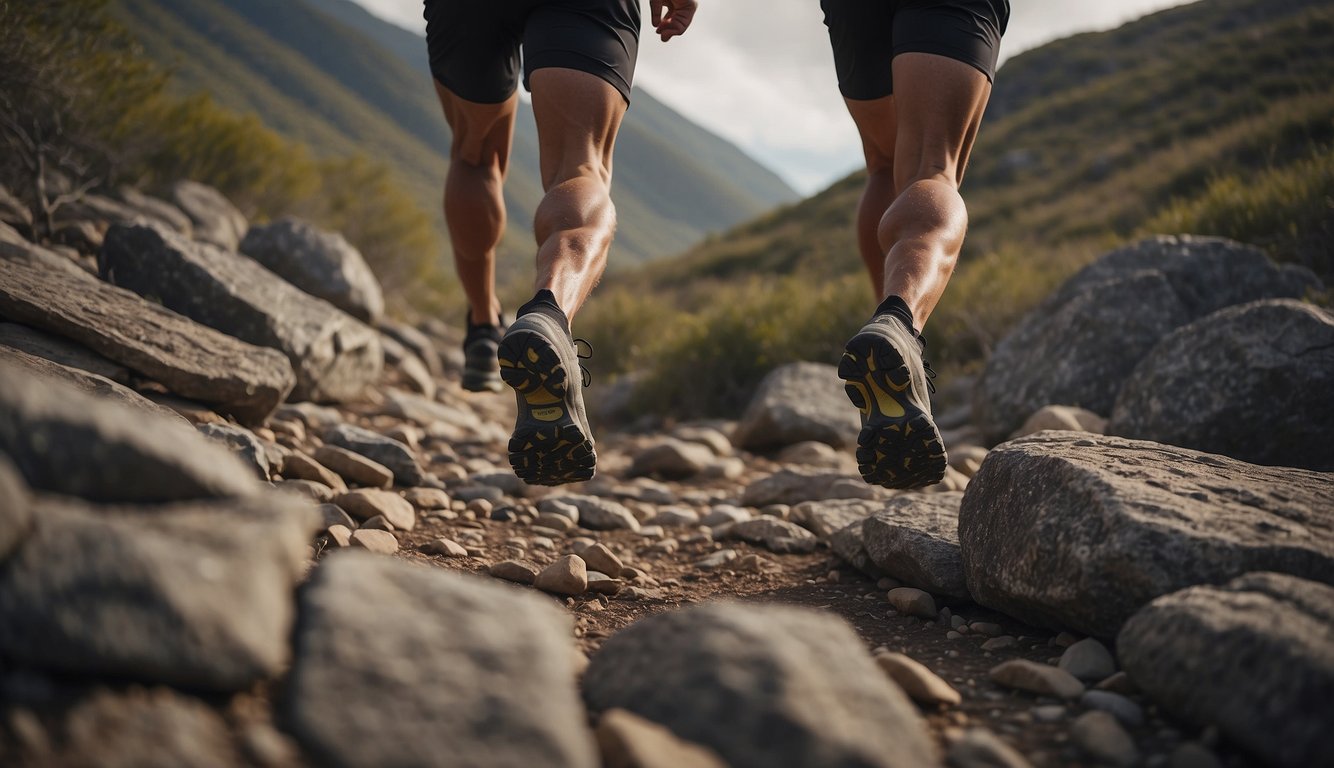If you’re looking to improve your trail running skills, one area that’s often overlooked is footwork. Proper footwork can help you maintain balance, avoid obstacles, and propel yourself forward more efficiently. As a trail runner myself, I’ve found that focusing on my footwork has made a significant difference in my performance on the trail.

One way to improve your footwork is by incorporating drills that focus on agility and balance. For example, you can set up a ladder or cones to practice quick footwork and change of direction. Another option is to practice running on uneven surfaces, such as rocks or tree roots, to improve your balance and stability. These types of drills can help you become more comfortable and confident on the trail.
In addition to drills, strength training can also help improve your footwork. Stronger leg muscles can help you navigate challenging terrain and maintain proper form. Exercises such as squats, lunges, and calf raises can be particularly beneficial for trail runners. By incorporating these exercises into your training routine, you can build the strength and stability you need to tackle any trail.
Mastering Trail Running Basics
Understanding Trail Running Biomechanics
Trail running is a unique sport that requires a different set of skills and techniques compared to road running. Understanding the biomechanics of trail running is essential to improve your performance and reduce the risk of injury.
Trail running involves running on uneven terrain, technical trails, and obstacles. Therefore, your body needs to adapt to the changing terrain and maintain balance and stability. The muscles that are essential for trail running include the glutes, quadriceps, hamstrings, and shoulders.
To improve your trail running biomechanics, you can incorporate strength training exercises such as lunges, planks, and plyometrics. Yoga can also help improve your mobility and stability, which are crucial for trail running.
Selecting the Right Gear
Selecting the right gear is essential for trail running. The right gear can help you improve your efficiency, endurance, and safety. Here are some tips for selecting the right gear for trail running:
- Trail Running Shoes: Trail running shoes provide better traction, stability, and protection compared to road running shoes. Look for shoes with a rugged outsole, a protective toe cap, and a secure fit.
- Clothing: Wear moisture-wicking clothing that can keep you dry and comfortable during your run. Dress in layers, wear a hat, and apply sunscreen for protection.
- Navigation Tools: Carry a map, a compass, or a GPS device to help you navigate through the trails.
- Water Bottle: Stay hydrated by carrying a water bottle or a hydration pack.
- Headlamp: If you plan to run during the early morning or late evening, carry a headlamp to help you see the trail.
By selecting the right gear, you can improve your performance and reduce the risk of injury. It’s important to prepare for your trail run and be aware of your surroundings to ensure your safety. With the right preparation and technique, you can enjoy the beauty of nature and improve your trail running skills.
Enhancing Footwork and Technique
Improving Stability and Balance
As a trail runner, I understand the importance of having good balance and stability. One way to improve this is by incorporating strength training exercises such as squats and box jumps into your workout routine. These exercises help build leg muscles, which in turn improves stability and balance.
Another way to improve stability and balance is by working on ankle strength. Strong ankles are essential for navigating difficult terrain and maintaining control on technical single track. Plyometric exercises such as jumping jacks and jump rope can help improve ankle strength and reduce the risk of ankle injuries.
Optimizing Speed and Endurance
Having good footwork and technique is essential for optimizing speed and endurance on the trails. Quick turnover and maintaining a forward lean can help improve speed, while controlling impact forces and minimizing muscle imbalances can help improve endurance.
When running uphill, it’s important to maintain a quick turnover and a forward lean to minimize the effects of gravity. On the other hand, when running downhill, it’s important to maintain control and minimize impact forces. Shorter strides and a slight forward lean can help with this.
Injury Prevention and Care
Injury prevention is crucial for any trail runner. One common injury among runners is plantar fasciitis, which can be caused by muscle imbalances or overuse. Incorporating exercises that target the feet and ankles, such as calf raises and ankle circles, can help prevent this injury.
In the event of an injury, taking time off and seeking medical attention is important for proper care. It’s also important to ease back into running gradually to prevent re-injury.
By incorporating these tips and techniques into your training, you can enhance your footwork and technique, improve stability and balance, optimize speed and endurance, and prevent injuries on the trails.

